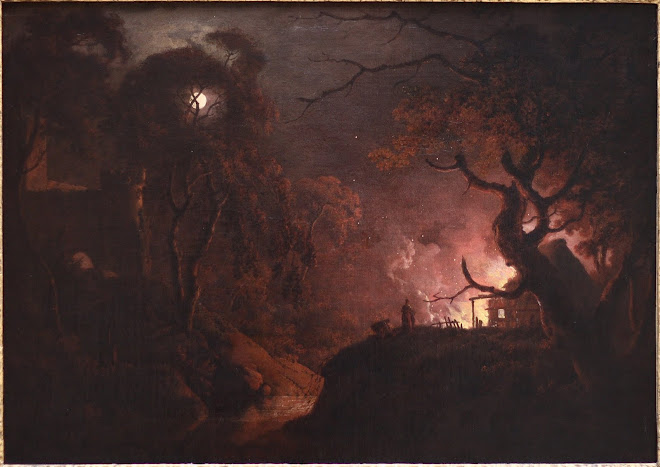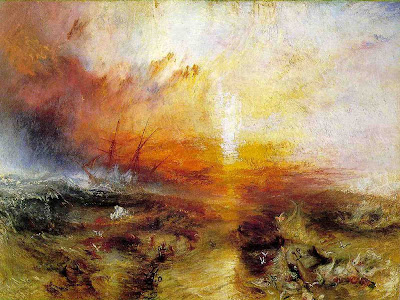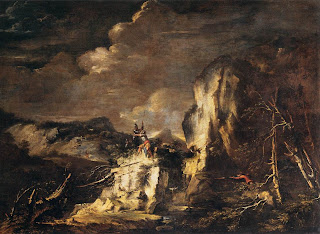WILLIAM GILPIN (1724 - 1804)
'These Splendid remnants of decaying grandeur speak to the imagination in a style of eloquence which the stippling cannot reach; they record the history of some storm, some blast of lightening or other great event, which transpires it's grand ideas to the landscape and in the representation of elevated subjects, assists the sublime'.
JMW TURNER (1775 - 1851)

Fishermen at Sea exhibited 1796 Oil on canvas 1120 x 1425 x 105 mm
THOMAS BURNET (1635 - 1715)
Burnets beliefs on the earths geology came from the idea that when God destroyed the human raceto cleanse human sin, as written in the book of revelations, he also crushed the earths shell, (the earth to Burnet was a giant unblemished, smooth egg). The shell fragments were scattered as mountain ranges, 'very ghastly and frightful'. The mountains like great ruins.
A simplified version of Burnets theories but I love the idea that the earth is like an egg, and the wrath of God is the reason for the 'damaged', or 'broken' savage landscapes we may see, its such a beautiful image to me.
Burnet on Mountains 1680
Burnets explanation identified mountainous scenery in all its horror as a product and symbol of the fall; such terrain was punitive of desire, a reminder of how God obliterates the perverse and the transgressive.
JOSEPH WRIGHT OF DERBY 1734 - 1797
Moonlight Italian Landscape 1785
| Joseph Wright of Derby was an English Romantic Painter. Many of his paintings reflect the spirit of the industrial revolution, in particular scientific procedures and developments. I particularly love his landscapes and the way in which he captures the eeriness of the moonlight in the above images, famed for his use of the Chiaroscuro effect (emphasisng the contrast of light and dark) he adds a depth and drama to the scenes of rugged landscape and calm waters. The interplay of light and darkness fascinated the artist alongside the physical process that governed the working of the universe. SALVATOR ROSA (1615 - 1673) |
 |
| Salvator Rosa, Temptation of st. Anthony, 1646 |
 |
| Witches at Their Incantations (c1646) |
Rosa's landscapes have been described as savage and as Sublime. Their enormity has a God like presence but for me it is more cataclysmic than sublime. As if nature or God is fighting back.
Salvator Rosa's paintings of far off lands were popular amongst the traveling British on their Grand Tours. As they took home both authentic and copied Rosa's a new aesthetic sensibility was born.












